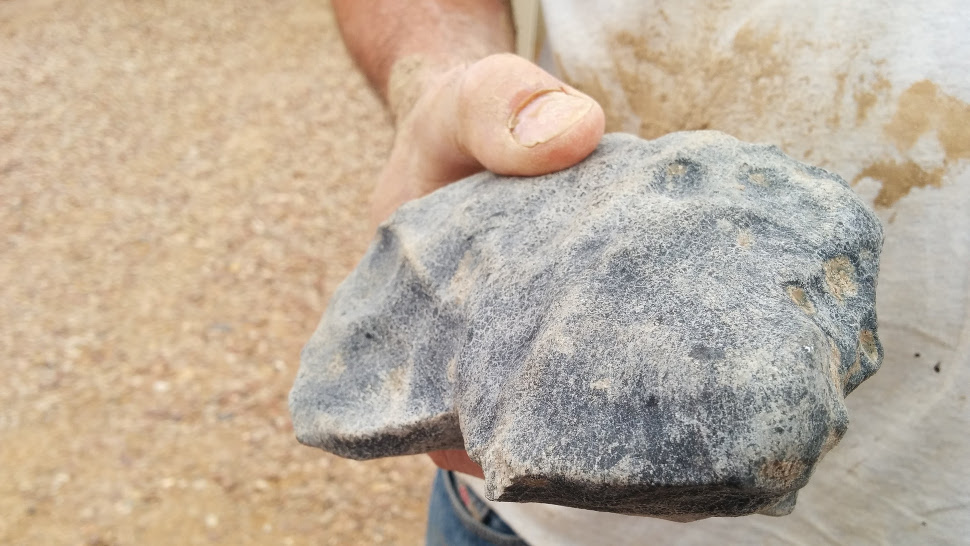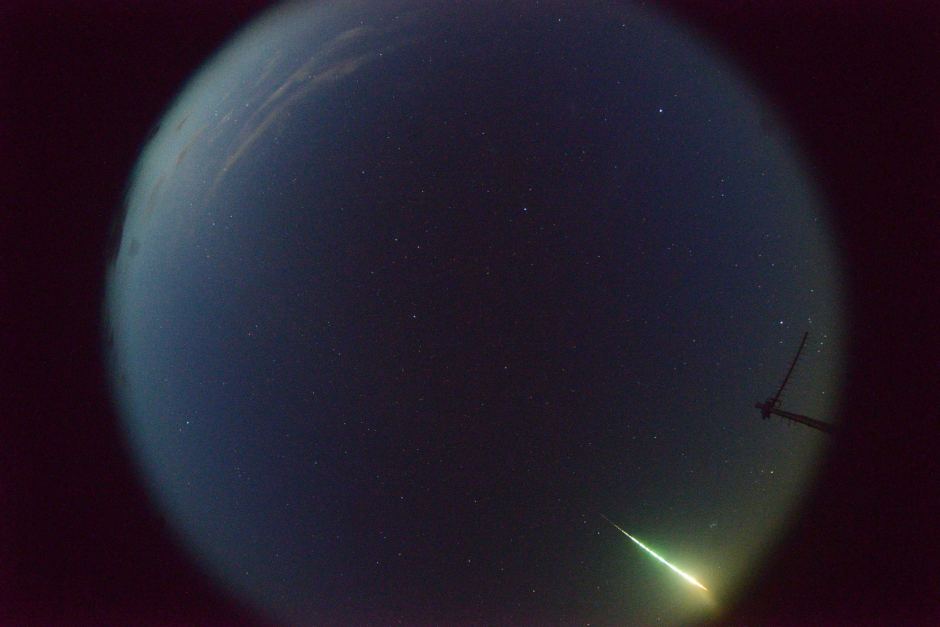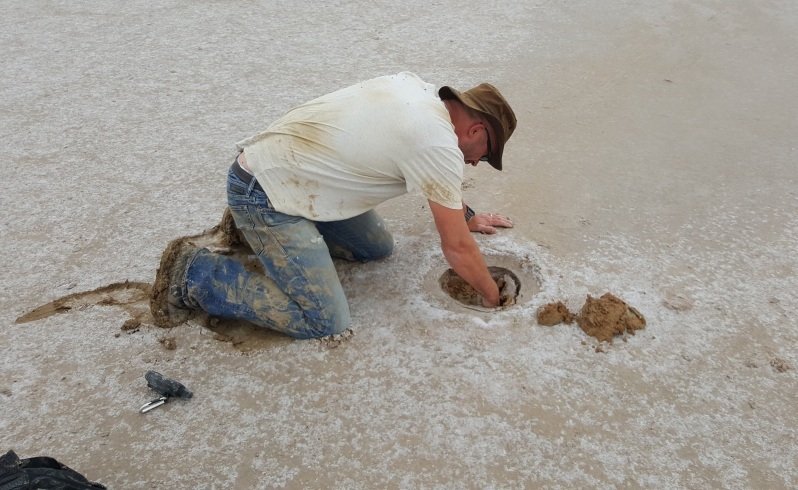
In Australia, geologists have discovered an ancient meteorite that fell to Earth last November. The stone, which, according to preliminary standards, is estimated at 4.5 billion years, actually saved for a few moments before the beginning of the heavy rains that would definitely hide it from human eyes forever. The fall of the meteorite, which took place on 27 November 2015, could see local residents Australian Willame Creek and other nearby regions.
The fall of a meteorite was recorded Desert Fireball Network, a network of 32 high-speed wide-angle cameras installed in different parts of the wild Australian terrain in this region. These cameras collected information the Desert Fireball Network team has analyzed and figured out the approximate place of the fall of the meteorite. As it turned out, this place was a dry lake Eyre.

One of the network cameras Desert Fireball Network captured the moment of falling of a meteorite
It was decided to act quickly. In this time period usually starts heavy rains, which could deprive geologists the opportunity to study the meteorite. Was taken by a very large-scale operation involving two unmanned drones, as well as a survey of local residents.

After three days of searching, which began on 29 December 2015, the researchers found a 1.7-kilogram rock, has buried in a thick salt layer of dirt and formed a hole with a diameter of 42 centimeters.
Here come the researchers a few days later — and to find the meteorite would have been impossible. Under intense heavy rainfall of the lake Eyre would be filled again, burying this valuable find.
After the analysis of the stone the researchers came to the conclusion that the meteorite belongs to the class of chondrites, and originates from the time of the birth of the Solar system, more than 4.5 billion years ago. In an interview to television channel ABC News Phil bland, who led the search expedition, told that “the meteorite was somewhere beyond the orbit of Mars. Somewhere between Mars and Jupiter. The ancient stone of the Earth.”
